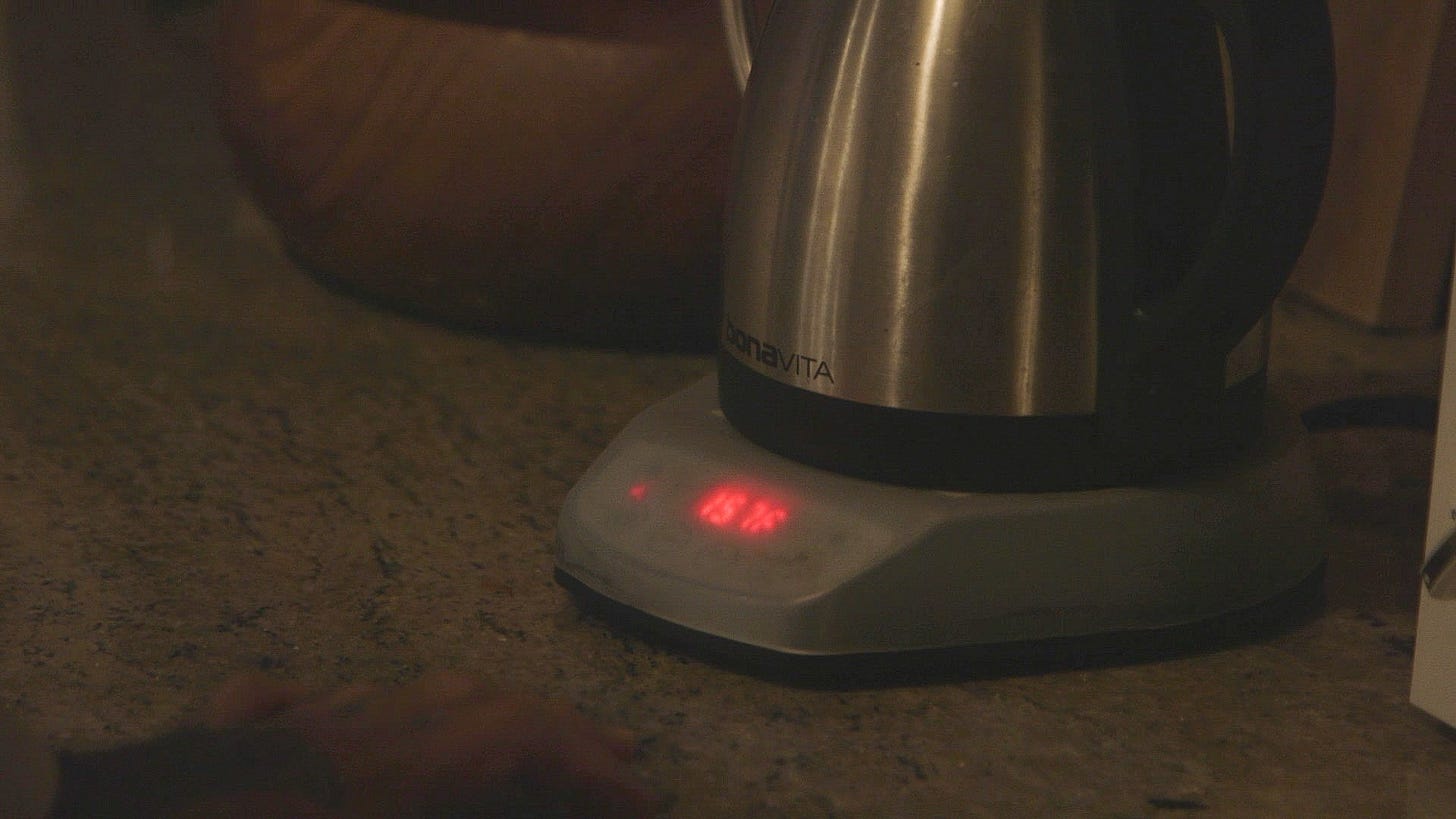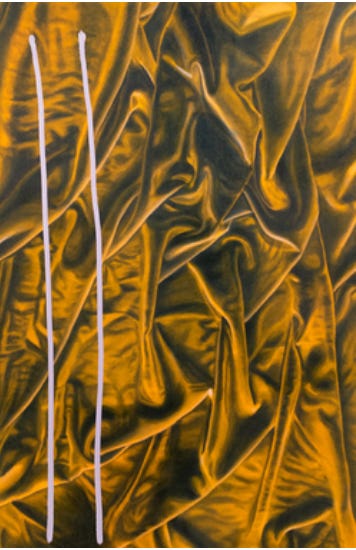In Conversation with: Julio Williams
Written by Joseph Parker Smith
Although his work revolves around photography, I got the sense so much of it was just about the enjoyment of the paint. The studio is always there for him, with paintings stacked everywhere, and the smell of linseed oil. Sitting among the work, we ventured into different topics.
Joseph Smith: Ok, so why microdosing mushrooms?
Julio Williams: A lot of people have been getting into microdosing lately because they’re looking for a way to think outside the box or tap into this creative side of their brain. It’s popular among tech executives and techno kids, I’ve always gone to parties and been like- “Oh, well maybe I just want to trip a little bit. I don’t want to be completely hallucinating, but it would be nice to open this channel in my mind.” Microdosing is an experience that's going to bump you into some tangent that maybe you’re not thinking about.
JW: I always set the tea kettle to 170℉. The higher the temperature you go, the more things start to break down. So 170℉ is good for me. And you know, you just do the regular thing, throw it in there with some tea and drink it down.
JS: How would you put your painting practice into a thesis statement?
JW: My painting process is about re-experiencing time. That’s why I think it’s so important that it’s based on photography, because I personally feel like I navigate my world via images.
JS: When you transfer those images from photography into your painting, it feels like your audience is gaining deeper access to those memories, in a sense. How did you first get into photography and why was that your first love?
JW: In college, I’d be at parties taking pictures of friends and stuff and they would be so important to me. Maybe some of them moved away, some have died. All I have left are the memories from these photos.
I was dating this person and she got killed by a drunk driver. This person meant so much to me, and I didn’t make anything creatively of all of our time together. I started taking pictures everywhere, documenting stuff.
That's what originally drew me to this series. All of the old pictures of my old bed or my old bedroom would have so much feeling. Once you're not in that room, once it’s not your bed anymore, that photo becomes the only thing you have of that time. And that is an art piece, that is art. It’s like this weird object that stands for this time and this feeling. It’s not just that second to take the photo, it’s almost like a symbol for this whole year.
JS: I remember you talking about the one photo with the red sheets as a memory. Could you elaborate on that?
JW: That piece always generates a lot of conversation. It’s about a specific time. I lived in this one place with this one person, doing this one thing. We broke up, and I can still remember the blanket we had pulled out because we had set our mattress in the living room. It’s actually not a bed, it’s just a blanket on top of a mattress. And this person I was with, she had left her phone there one day, and I can still remember just how happy we were kind of “camping out” in our living room in our own house, the first house we shared as a couple.
There’s all this happiness and hope in the image. When I was painting it, obviously my feeling was different. Now it’s years later, after we’ve broken up.
JS: Could you tell me about these paintings on the floor?
JW: I feel really good about these paintings because they're photo collages made out of inkjet prints. They stand on their own, in a way. They do a thing that I really love, it’s hard to know what that thing is. My friend actually painted some of it with an airbrush. The lighter spots aren’t really light, they’re paint. It adds this extra volume I really love.
JS: What's the longest you’ve ever sat on an image before deciding to paint it?
JW: I’ve been living with some images for years. That red one with the green, is probably one of the first photos I’ve taken. I sat on it between 2000-2005 or 2006. That one took at least over a decade, you know.
JS: Do you think painting is like the pursuit of religion to you? It’s not really involved in your practice, but just to yourself, this pursuit of a connection with something bigger?
JW: I think that it is, in a way. Like that’s the joy of life; finding these things that fulfill you. And painting is the most significant thing for me, it’s more important than anything else in my life. We’re really lucky, because we (artists) have this thing that we do that gives our lives meaning no matter what else is going on. You can break up with someone and be like, “You know what, this sucks! But I'm just gonna go to the studio.” It’s amazing that [as an artist] you can leave these things that are affected by your life and people can think about you, and talk about it.








